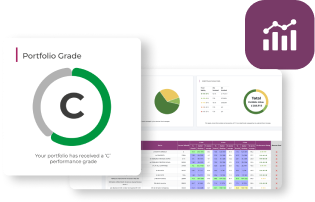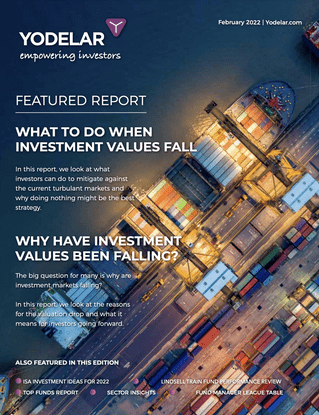- Many top-performing funds struggle to repeat their success, making past results a useful reference point - but never a reliable forecast.
- Chasing recent winners often leads to disappointment, especially when large inflows dilute performance or alter a fund’s strategy.
- A fund can be strong in isolation but still cause problems in a portfolio if it overlaps with other holdings or disrupts diversification.
- Active oversight helps identify when a fund no longer aligns with objectives - whether due to drift, manager change, or persistent underperformance.
Will Today's Stars Shine Tomorrow?
Every investor knows the temptation. You look at a list of top-performing funds over the past few years, pick a name near the top, and invest. The logic seems sound. If a manager has demonstrated skill in generating returns ahead of peers, surely that success will continue. But this assumption often overlooks critical factors that influence long-term results. While past performance can offer useful insight into a fund’s track record, it is only one part of the picture - and not a guarantee of future success.
Numerous studies have shown that while some funds demonstrate consistent results, many top performers fail to maintain their momentum over time. Investors who buy in too late - often during a fund’s most popular period - may end up disappointed just as their own holding period begins.
This article explores why sustained outperformance is so difficult to achieve, why past performance should always be considered in context, and why structured, professional oversight is essential to long-term investment success. Without it, even a portfolio filled with high-performing names can gradually drift off course - and underdeliver when it matters most.
The Mirage of Performance Persistence
The idea that strong past performance will continue is appealing - but often unreliable. Numerous studies have examined the persistence of fund returns and concluded that while a small group of funds show consistency, most do not. A notable study by the Pensions Institute at Cass Business School found "no evidence of short-term persistence in UK equity fund performance once allowances were made for the impact of risk, investment style, and charges." In fact, the study found that negative performance is more persistent than positive performance, or, in other words, underperforming funds tend to keep underperforming, while outperforming funds are more likely to revert to the mean (Blake & Timmermann, 2002).
This pattern is reinforced in global research. A National Bureau of Economic Research paper concluded that most funds "do not exhibit statistically significant persistence in outperformance after controlling for common risk factors" (Berk & Green, 2004). In short, while some managers demonstrate genuine skill, many top-performing funds tend to deliver returns closer to the average over time.
None of this suggests past performance is irrelevant - far from it. It can provide valuable signals about a manager’s track record, risk discipline, and style. But relying on past returns in isolation - without assessing how and why those returns were achieved - creates significant risk.
Timing Risk: When You Buy Matters
One of the cruel ironies of fund investing is that a manager's period of strongest performance often precedes the moment most investors pile in. Why? Because as funds rise up the rankings, they attract attention, receive inflows, and become part of recommendation lists. But, by then, the best days may already be behind them.
This dynamic is known as performance chasing, and it's surprisingly common. A 2020 study in the Review of Financial Studies found that fund flows tend to follow past performance with a lag, but these inflows can dilute the future returns of the fund. Larger asset bases make it harder for managers to stay nimble, exploit inefficiencies, or trade in and out of positions without impacting price (Chen et al., 2004).
In addition, another factor that can erode performance is the way poor-performing funds are handled. A proportion of these may be shut down completely or merged into more popular alternatives from that fund provider. While this avoids the appearance of closure, it can weaken the quality of the stronger fund by introducing underperforming holdings, inflating its size, or altering its original strategy. Over time, these changes can dilute the characteristics that made the fund successful in the first place - making future outperformance harder to sustain.
The Case for Active Oversight
Given these realities, long-term investment success is unlikely to come from identifying a handful of top funds and leaving them untouched. It comes from building - and actively managing - a portfolio with structure and discipline. That means selecting funds not only for their past results, but for their ongoing role within a portfolio, their suitability to current objectives, and their behaviour under different market conditions.
A well-managed portfolio is more than the sum of its parts. Professional oversight ensures that each fund is reviewed regularly - not just for recent returns, but for mandate consistency, risk exposure, correlation, and overlap. It allows for timely action when a fund begins to drift from its purpose, whether due to manager change, strategic shift, or persistent underperformance.
It also helps avoid the inefficiencies that arise from holding multiple funds that behave similarly. A portfolio made up of strong individual performers can still produce poor overall results if it lacks diversification, tilts too heavily toward one theme, or becomes overloaded with duplicated holdings.
Active oversight ensures that portfolios evolve. It allows investors to stay aligned with their strategy and respond to new opportunities or emerging risks - not years after the fact, but in time to make a difference.
Conclusion
Fund performance can be unpredictable. While some funds with strong past results go on to deliver again, many do not - and those that underperform often continue to struggle. Chasing performance is no replacement for a structured, long-term investment process. For investors without the time, tools, or data to monitor their portfolios regularly, a fire-and-forget approach can leave them exposed to the wrong funds at exactly the wrong time.
The better alternative is to work with full-time, professional portfolio managers whose role is to monitor holdings, evaluate fund behaviour over time, and make incremental changes to keep the overall strategy on course. Because in investing, as in sport, form is temporary-but class requires constant attention.
Closing Thoughts: Why Oversight Matters More Than Ever
In a market where conditions change rapidly, relying on outdated assumptions or static fund lists is no longer enough. Even high-performing funds can become unsuitable if they no longer align with an investor’s goals or portfolio structure.
Regular reviews are essential. They provide the visibility needed to identify inefficiencies early and the insight to make informed decisions. But insight alone is not enough. The way your portfolio is managed - whether through ongoing advice or a discretionary mandate -plays a critical role in how effectively changes can be implemented.
Discretionary investment management, when aligned with investor objectives, offers greater flexibility. It allows for timely adjustments to be made without waiting for client approval, helping portfolios stay responsive in both stable and volatile conditions.
Following Yodelar’s merger with MKC Wealth, our clients can now benefit from portfolios that are managed on a discretionary basis by MKC Invest, a discretionary fund management firm within the MKC group. This allows for timely portfolio changes without requiring client approval for each adjustment, helping to keep portfolios aligned with their intended objectives during both stable and volatile market conditions.
If you are unsure whether your portfolio remains suitable for your needs, or whether drift is quietly undermining its structure, a portfolio analysis can provide valuable clarity. Book your free review today and take the first step towards restoring alignment and improving long-term performance.
Because in today’s investment landscape, it’s not just about who you invest with - but who is managing the managers.
















